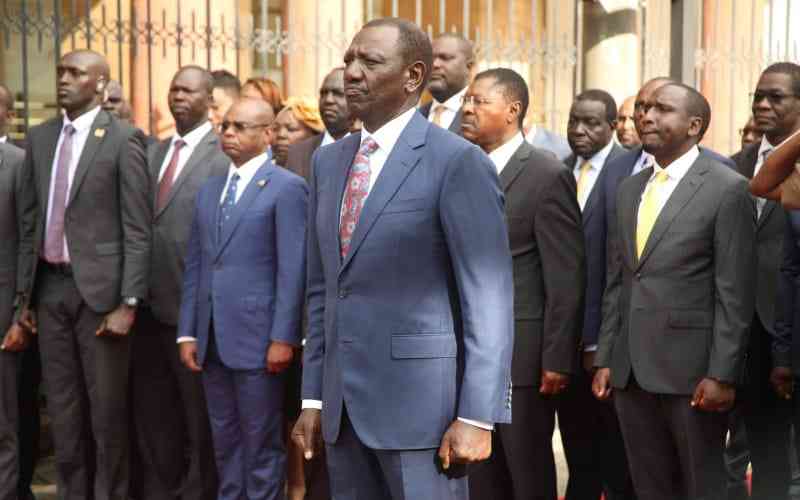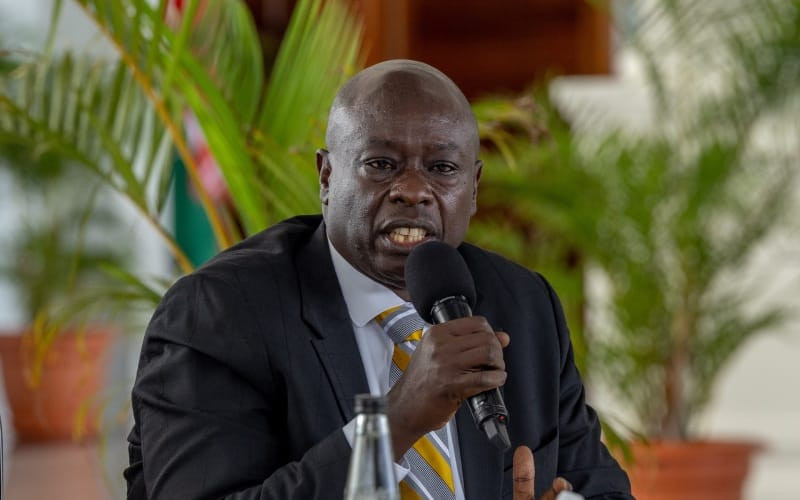Ethiopian Prime Minister, Haile Delasegn was in town just the other day. The climax of his visit was marked by signing of various bi-lateral agreements on trade and inter-connectivity between the two regional powerhouses.
Ethiopia and Kenya have enjoyed a cordial relationship since pre-independence days when some Mau Mau fighters (not Lemma Ayanu) reportedly crossed over to Ethiopia to source for support from His Majesty Emperor Haile Selassie. It’s only during the time of Mengistu Haile Mariam that our bond weakened due to differences in ideology; Marxist Abyssinia vs capitalist Nairobi.
One of the notable agreements signed was the building of an oil pipeline. This was a master stroke the only blot is that it has come after we’ve used a fortune on standard gauge railway.
Ethiopia is one of the most important Kenyan allies in Eastern Africa region. With a population of almost 100 million people and boosting the largest economy in the region, its potential is endless and largely untapped. The fact that it’s also the largest landlocked country in the world is an opportunity we are exploiting too late.
One of the hallmarks of the obstreperous Grand Coalition experiment was the launch of Lamu Port in 2012, one of vision 2030 projects in an elaborate ceremony attended by three heads of state.
The 2.5 trillion ($29.24 billion) project was projected to add 3% to the country’s GDP, open up the interior and ease pressure on the Mombasa- Nairobi – Malaba corridor. All seemed to be on course until standard gauge railway happened.
The amount of financial resources the railway is gobbling is mind-boggling. The first phase Mombasa- Nairobi is projected to cost 327 billion. The second phase Nairobi – Naivasha is expected to cost 153 billion. We will spend 480 billion on SGR from Mombasa to Naivasha. You don’t have to be an economist to realize that 1trillion will be spent on SGR from Mombasa to Malaba
For SGR to make economic sense; to reach break-even point, it will have to be extended to Uganda and probably Eastern Congo. We will also have to assume 80% of cargo will be transported via rail not forgetting that we will be crossing our fingers hoping Uganda will honor their side of the bargain.
It is a well-known fact that most cargo on our roads ends up in the landlocked countries of Uganda, Rwanda, Burundi and Eastern Congo. If SGR ends at Malaba, it will end up being a railway line to nowhere.
One of the reasons given as to why SGR has gobbled much money is because of land acquisition. Billions have been paid out to land speculators. If you compare the cost of land on the two corridors, the Lamu – Juba, Lamu –Addis route is way cheaper.
The other lingering question is the issue of who will maintain the railway. Kenya railways is dead and buried and its successor Rift Valley Railways is headed the Pan paper way. It makes more money in Uganda than Kenya. Need I mention Titus Naikuni is the Chairman?
We also have not been told what will happen to the old railway line. What if we would have upgraded this ancient architectural marvel and built the new one on Lamu- Isiolo – Addis and Lamu – Isiolo – Juba corridor?
Let’s not forget that tendering process was also flawed. The company laying the railway is the same one that conducted feasibility studies in clear and blatant violation of Public Procurement Act. But we forget easily, don’t we?
 The Standard Group Plc is a
multi-media organization with investments in media platforms spanning newspaper
print operations, television, radio broadcasting, digital and online services. The
Standard Group is recognized as a leading multi-media house in Kenya with a key
influence in matters of national and international interest.
The Standard Group Plc is a
multi-media organization with investments in media platforms spanning newspaper
print operations, television, radio broadcasting, digital and online services. The
Standard Group is recognized as a leading multi-media house in Kenya with a key
influence in matters of national and international interest.
 The Standard Group Plc is a
multi-media organization with investments in media platforms spanning newspaper
print operations, television, radio broadcasting, digital and online services. The
Standard Group is recognized as a leading multi-media house in Kenya with a key
influence in matters of national and international interest.
The Standard Group Plc is a
multi-media organization with investments in media platforms spanning newspaper
print operations, television, radio broadcasting, digital and online services. The
Standard Group is recognized as a leading multi-media house in Kenya with a key
influence in matters of national and international interest.








